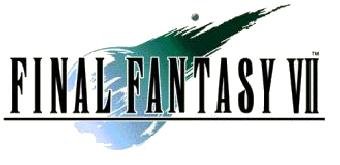 A game impossible not to recommend! |
|
Publisher: Sony Developer: Square Genre: RPG Origin: Japan When videogames are delayed for any significant amount of time, they are usually, for some reason, far below expectations. Games like Battlecruiser 3000AD, Ultima VIII, and Stonekeep were all pushed back repeatedly, only to be either incomplete (Battlecruiser) or simply bad (Ultima, Stonekeep). But occasionally, a game comes along that bucks that trend. And in the case of Final Fantasy VII, the latest output from RPG king Square, the end result justifies the delays without question. FF7 is, without a doubt, the new benchmark for console titles. To begin with, FF7 is longer than every console RPG to date. The game takes place across 3 CDs. It took Next Generation Online, no stranger to RPGs, a total of 49 hours to complete the game (approximately 25 hours for disc one, 15 for disc two, and 9 for disc three - the majority of which was spent breeding and racing chocobos [q.v.]), twice the length of Final Fantasy VI (known as III in the U.S.) and Wild Arms. While it is possible for the game to be completed in less time, rushing to complete it is definitely not recommended. Since their last Japanese-translated RPG (Chrono Trigger for Super Nintendo), Square has been known for adding "easter eggs" to their games - opportunities for players to learn more about the game's characters, bonus games, and the like. Well, Square has outdone themselves this time. At least three hours are spent uncovering the main character's past, with an additional hour each for several other characters. One of the game's "secret" characters has her own hour of backstory, complete with her own town that is not even necessary to visit during the game's normal progression. What is necessary during the game's normal progression is the capacity for awe. FF7's graphics are light years beyond anything ever seen on the PlayStation, making Wild Arms look like a Yarouze demo (we have nothing against Wild Arms, but FF7 is that good). The game begins in an enormous industrial complex housed in a futuristic city, and remains there for the first seven or eight hours of play. Just when it appears that the entire game will take place in the city, the venue changes to a fully 3D, fully rotatable engine, and players will find that the city is a mere dot on the enormous world map. When not travelling in the world, players will navigate through static, hand-drawn locales. And in another huge leap forward for RPGs, the corridor is no more. Players can walk in, around, on top of, and through submarines, glaciers, amusement parks, reactors, farms, and dozens of other places. Since the backgrounds are static, the developers were able to put all their attention into animating the iconic representation of the party leader, which is represented in super-deformed polygons, looking remarkably like the Wild Arms characters look in battle. It is unknown who came up with the idea for the polygonal battles first, Sony or Square, but Square has been in the business longer, and it shows in FF7's combat engine. While only three members can be in the party at one time, the effects more than make up for the game's only shortcoming. The graphics are as "realistic" as possible, considering the genre, with each character having a distinct look. And since each character uses a different style of weapon, the animation is different for each character. But it doesn't stop there - each character also has several other attack animations, based on their equipment. The equipping of characters is perhaps the most important part of the game; the game itself devotes several pages of text just to explain it. The special attacks and spells, however, are the game's strongest points. All nine characters have "limit breaks", which can only be used after the character takes a certain amount of damage. When the limit is reached, the character attacks and does extra damage to the target. Each character has at least four, with one having nine. The spells are the most graphically impressive part of the game (the game's CG sequences run a close second). There are 70 in all, 16 of which are FF3-style summon monster spells. One of these (Leviathan) was in the FF7 demo disc, which may be why the demand for the game has been so huge. The game's plot is deep and typical of Square's prior efforts quite epic. Square takes great pride in its storytelling abilities and uses a number of flashback sequences, and loads of rendered sequences and prerendered FMV to add greatly to the mood and emotion of the story. Adult themes and even some uncensored language (Goddamn, Crap, Shit, etc.) were all left in place as per Sony's promise not to alter the work. The teen rating for the game is well deserved due to such mature sexual and violent themes. All in all, it is impossible to not recommend Final Fanatsy VII to anyone who is even vaguely interested in RPGs.
|